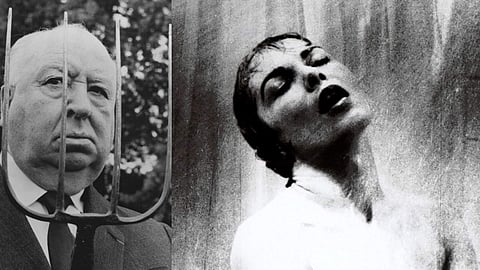

Released in 1960, Alfred Hitchcock's 'Psycho' is a textbook for filmmakers in scripting, character development and montage.
While the film celebrates the 58th year of its release today, here is how the film majorly influenced filmmaking as such.
Violence
Psycho had a tough time with the American censor since many aspects of the film were unconventional. Be its depiction of graphic violence or sexuality, 'Psycho' was asked by American, New Zealand and British censors to make cuts.
The depiction of violence and its preceding build-up in the film became a benchmark for films to come later. One of the most famous sequences in film history, the shower scene, where Janet Leigh's character is murdered, was shot using close shots and some medium shots, unlike sequences in films predating Psycho- making the scene more subjective and gruesome. Added to the visual horror was the terrific score by Bernard Hermann titled 'The Murder'. The track used violas, cellos and screeching violins.
The unique way in which Hitchcock used the Point-of-Vision (POV) technique for the antagonist's gaze later inspired films like Speilberg's Jaws, and Stanley Kubrick's 'The Shining'.
Listen to Bernard Herrmann 's score for the shower sequence:
Montage
Edited by George Tomasini, Psycho is most famous for its shower sequence among others. In the same scene, Hitchcock also broke conventions by not adhering to the 180-degree rule as well as using jump cuts. The mental turbulence Janet Leigh's character Marion goes through while driving to California with stolen money is shown through close-ups, crossfades with the dark road and in in the scene where she is stopped by a cop.
Watch the shower sequence from 'Psycho':
The editing was heavily inspired by Soviet montage. Surrealist filmmaker David Lynch has often taken cues from Pyscho for his movie like 'Mulholland Drive' and 'Eraserhead'.
Film promotion
Hitchcock pulled all stops in promoting the movie, which he had made on a shoestring budget of USD 806,947 and even told the studio that he will shoot in black and white to cut costs. After getting the film rights of Robert Bloch's novel of the same name, Hitchcock reportedly bought out as many copies of the book available to keep the suspense of the film.
For keeping the mystery around the film, Hitchcock ordered the lead cast, Anthony Perkins and Janel Leigh not to give any interviews.
The film's trailer too was signature Hitcock style- the man appearing himself on video, showing the audience the set and stopping right before he revealed the suspense.
The film raked in USD 50 million upon its release.
Watch the trailer here:
Character building
Anthony Perkins did kind of steal the show with his erratic performance as Norman Bates, the Motel-owning-cross-dressing-killer. Psycho also broke conventions by killing off the lead actor- Janet Leigh's Marion in the first half of the film itself. The movie then zooms into the life of Bates and how the cottage where Bates and his 'mother' lives with their stuffed animals. Hitchcock also addresses Bates' dysphoria with his gender identity and the public's notion of sexuality and mental health.
Norman Bates is shown as a mamma's boy who killed his own mother and her lover out of jealousy and the subsequent trauma led him to a split personality with him turning into 'the mother'- an alcoholic, abusive and violent character.
Impact
Filmmakers keep going back to watch the shower sequence or the scene where Marion rents the car, to study how Hitchcock uses simple shots to build up the tension.
'Psycho' has become a favourite among filmmakers including David Fincher whose 'Gone Girl' had made waves with the way its neurotic lead character (Rosamund Pike) was visualised.
Brian De Palma, the master storyteller of the American new cinema, who explored voyeurism in many of his films, too has used Hitchcockian references, especially from 'Psycho' and 'Rear Window' in most of his films.
Produced by Alfred Hitchcock and distributed by Paramount and later Universal Pictures, 'Psycho' has spun many follow-ups including a 2014-2014 TV show 'Bates Motel' as well a bunch of ignorable sequels and a television movie. Nothing beats the impact Psycho had on later movies on shooting violence, scripting characters.
Hitchcock killed off his top star in the first half of the movie- inspiring range of directors from Quentin Tarantino to Wes Craven as well as Malayalam filmmakers like Pavithran (Utharam) and KG George (Yavanika).
The movie also started the slasher films genre with films like 'Halloween', 'Dressed to Kill' and even the 'Scream' series.
Reportedly, when French film legend Francois Truffaut asked Hitchcock why he wanted to make Psycho, Hitchcock replied- ‘I think the murder in the bathtub, coming out of the blue, that was about all."